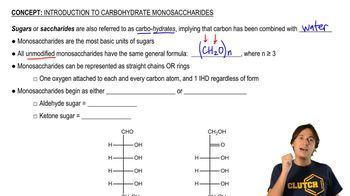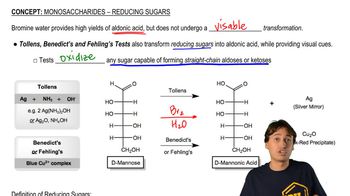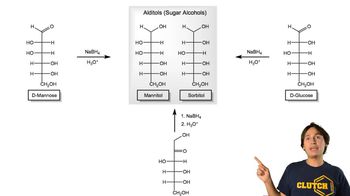Predict the products obtained when D-galactose reacts with each reagent.
(h) NaBH4
 Verified step by step guidance
Verified step by step guidance Verified video answer for a similar problem:
Verified video answer for a similar problem:



 7:19m
7:19mMaster Monosaccharides - Reduction (Alditols) with a bite sized video explanation from Johnny
Start learning